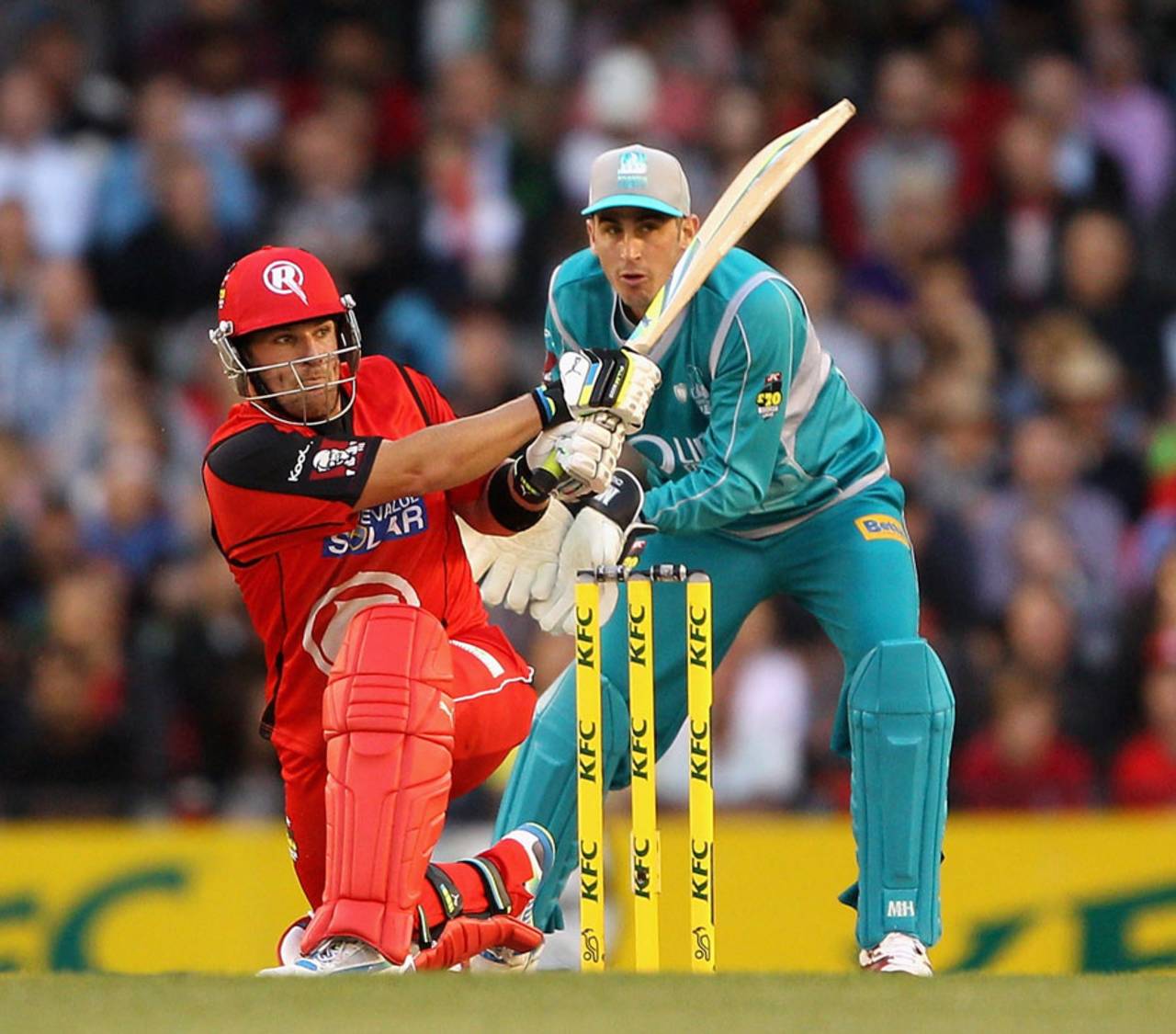Casting a critical eye over Network Ten's new Big Bash League coverage this summer, a number of things have struck me. First and foremost, the broadcast is a refreshing change-up from Channel 9's now relentless pursuit of vaudeville. Recent Australian greats Ricky Ponting and Adam Gilchrist have made a winning transition to the commentary box, and the dry, unscripted additions of Viv Richards have added something unique. In most senses including local ratings it has been a winner.
Still, and this isn't just down to Ten or any other T20 broadcast network, I think we're all missing a trick as fans. T20 statistics, based almost entirely on the same parameters as traditional cricket, are all but useless. Every time the broadcaster flashes them up I'm taken by how little they tell us about the shortest format. They also add nothing to the discussion surrounding individual players.
It's almost perverse really, that a game with such a long-standing fetish for numbers has done so little to adapt and shift the debate around short-form cricket. It puzzles me slightly that the rapid enthusiasts of T20 aren't taking steps to change this, because it could be central to building appeal for the game among traditionalists that goes beyond mere entertainment.
Mostly we're left to debate the merits of technical innovation in a purely physical sense: laps, chips, ramps, slow bouncers et al. The fact is - and I would call myself an engaged agnostic when it comes to T20 cricket - we should be doing better in measuring what it is that makes a T20 player great, good, average or otherwise.
How is there not yet a standardised, widely adopted stat column for dot-ball percentage for bowlers and batsmen? In many instances it would tell you more than strike rates and economy rates do. Two batsmen may score 15 runs from 15 deliveries, but one of them might have hit two sixes and then otherwise have robbed their partner of strike, killing the momentum of the innings and potentially opening the door for the bowling side.
What's clear is that the traditional data range of cricket statistics that we see most commonly is far too narrow and its focus sometimes irrelevant to the requirements of T20. Teams and coaches know this. It's why legions of analysts and number crunchers have slowly migrated into the management ranks of top teams around the world. But their intention is to decode player data to provide performance analysis and a winning edge, not to enhance the knowledge of fans.
Cricket fandom boasts a fair portion of self-described nerds but too few of the statistically minded ones are really drilling into this stuff. All of us are guilty in that sense. Maybe in the relentless procession of cricket we just don't stop long enough to consider it.
Here's a superficial example: the
commonly available stats for the current Big Bash season will tell you that two of the better opening batsmen, Aaron Finch and Usman Khawaja, average 52.40 and 54.00 respectively. Finch edges Khawaja on strike rate, 148.02 to 118.24. Finch has 23 fours and 12 sixes, while Khawaja has 20 fours and has not yet cleared the rope in two fewer games.
Beyond highly subjective criteria, which basically boils down to aesthetic preferences, prejudices and an often ill-defined notion of "X factor" that pervades T20 media analysis, the average stat sheet or telecast graphic doesn't tell us much that could objectively establish who is the better opening batsman. That is always the case of cricket statistics to some degree, but the brevity of a T20 game makes it the most suitable for quantification through naked numbers than any of the three formats. The permutations and infinite variables of 50-over and Test cricket can make a liar of even the most brilliant statistician.
Would a stat as simple as dot-ball percentage reveal the chinks in Khawaja's armour that make him seem less effective to the naked eye? If that stat was segregated into ten-ball intervals it certainly would tell us he's a slow starter. "Run-out involvements" might also be of interest, as well as "strike ratio", telling us which of them turns the strike over regularly and who leaves their partner to watch on anxiously in search of a single or to calcify at the other end.
As ever, baseball can show cricket a thing or two. There are many fans of that sport who would argue that the incursion of advanced statistics and sabermetrics has taken a little joy and romance away from the game, but it's also been a boon for numbers nerds and analysts wanting to establish the cold, hard truth about a given player's capabilities. Yet instead of providing cricket and other sports with a "lightbulb" moment, the Moneyball revolution really hasn't done much more for cricket than prop up lazy journalistic analogies, a great deal of which entirely miss the point of the book and the tale it tells.
T20 cricket still awaits its own breakthrough. For a game so endlessly played, watched and analysed, we're still ridiculously low on the capture and dissemination of data that could help us understand it with greater clarity. Ed Cowan hinted at a stats revolution on
these very pages two years ago, but still we plug away with our averages, our strike rates and our six counts.
T20 cricket is well past its tenth birthday now. We really should start treating it like a grown-up.
Russell Jackson is a cricket lover who blogs about sports in the present and nostalgic tense for the Guardian and the Wasted Afternoons. He tweets here
